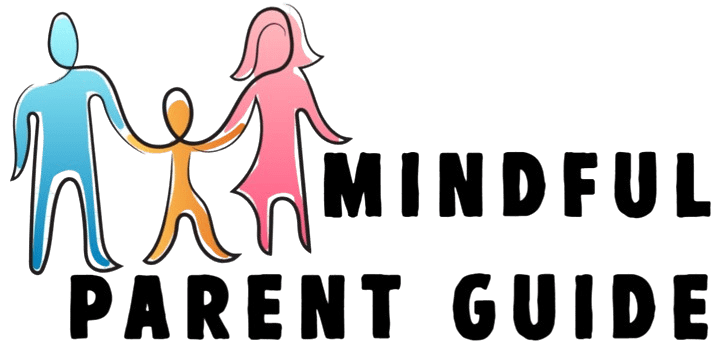10 Ways to Practice Mindful Communication
Effective communication serves as the foundation for meaningful relationships. Yet, many individuals find it challenging to connect authentically.
This article delves into ten practical techniques that you can adopt to practice mindful communication. All of these techniques aim to enhance understanding, empathy, and compassion in your interactions. From listening without judgment to utilizing non-verbal cues, each approach is designed to help you cultivate deeper connections with others.
Uncover how these strategies can transform your conversations, elevate your relationships, and facilitate conflict resolution. Embrace the opportunity to unlock the true potential of mindful communication in your daily life. Each of these techniques can contribute to your mental health and emotional resilience, helping you navigate through psychological distress and burnout.
Contents
- Mindful Communication Techniques
- 3. Use ‘I’ Statements
- 4. Be Present in the Conversation
- 5. Practice Active Listening
- 6. Take Time to Reflect Before Responding
- 7. Avoid Interrupting
- 8. Use Non-Verbal Cues to Show Understanding
- 9. Be Mindful of Your Tone and Body Language
- 10. Show Empathy and Understanding
- What Is Mindful Communication and Why Is It Important?
- How Can Mindful Communication Improve Relationships?
- What Are the Benefits of Practicing Mindful Communication?
- How Can One Incorporate Mindful Communication into Daily Life?
- Frequently Asked Questions
Key Takeaways:

- Listen without judging to truly understand others.
- Speak clearly and concisely to avoid miscommunication.
- Use “I” statements to take responsibility for your words and feelings.
- Reflect before responding to maintain emotional balance.
- Integrate mindfulness practices into your communication style.
1. Listen Without Judgment
Listening without judgment is a cornerstone of mindful communication. It creates a space where you can express your thoughts and emotions freely. This practice is vital for managing your emotions, as it encourages self-awareness and helps you navigate your emotional triggers in relationships.
It also fosters emotional validation, allowing others to feel heard and understood without the looming fear of criticism. This approach is recommended by mental health professionals and primary care physicians for its benefits in improving overall mental health.
By engaging in techniques like listening carefully and repeating back what the other person has said, you can show your commitment to grasping others’ perspectives. For example, when a friend shares a troubling experience, instead of jumping in with immediate solutions or opinions, reflect back what you’ve heard. This simple act can transform your connection with others!
Self-awareness plays a crucial role in this process. When you are attuned to your own emotions and biases, you become more skilled at stepping into someone else’s shoes. This level of empathy not only strengthens your personal bonds but also fosters trust, resulting in healthier, more fulfilling relationships. Practicing self-compassion can also enhance your empathy.
2. Speak Clearly and Concisely
Speaking clearly and concisely is essential in mindful communication because it ensures that your message is both understood and received accurately. This not only enhances your communication style but also elevates your social skills.
By taking the time to organize your thoughts before engaging in conversation, you can articulate your points with greater precision and impact. This approach helps to minimize misunderstandings and fosters deeper connections in your relationships.
When you prioritize clarity, you create an environment where ideas flow freely, encouraging others to express themselves openly. Regular self-reflection can further enhance your ability to communicate clearly and concisely.
As a result, effective interpersonal communication becomes the standard, ultimately leading to more productive interactions in both your personal and professional lives. These improved communication principles can also help reduce psychological distress and foster a positive mood.
Mindful Communication Techniques
3. Use ‘I’ Statements
Using ‘I’ statements is a powerful strategy in mindful communication. It enables you to express your feelings and needs without casting blame. This approach fosters emotional validation and enhances self-awareness in your conversations.
When you use ‘I’ statements, you can convey your emotions in a way that invites dialogue rather than triggering defensiveness. For instance, instead of saying, “You never listen to me,” consider a more constructive approach: “I feel unheard when I try to share my thoughts.” This subtle shift not only clarifies your feelings but also encourages the listener to engage with empathy.
By embracing vulnerability through such expressions, you lay the groundwork for more respectful and trusting relationships. When you openly communicate your experiences, you cultivate an environment where both you and the other person feel safe to share, ultimately leading to deeper connections. This practice can also enhance your self-development and contribute to a more genuine connection with others.
4. Be Present in the Conversation

Being present in the conversation is essential for mindful communication. It nurtures a deeper connection between you and others, fostering genuine interest and compassionate listening. This aligns with Thich Nhat Hanh’s teachings on mindfulness, which emphasize the importance of being fully present to enhance your interactions.
This presence allows you to truly engage with the person across from you. It encourages active participation instead of mere reactive responses. By employing techniques like focused breathing or maintaining meaningful eye contact, you can enhance your attentiveness, ensuring that you fully absorb what is being shared.
Practicing self-compassion and mindfulness techniques can further help you stay present in the conversation. Cultivating this awareness elevates the quality of your interactions; both you and the other party feel valued and understood. When you practice mindfulness in your conversations, you strengthen your interpersonal relationships and promote a profound sense of empathy and connection, leading to a more harmonious exchange.
This practice also aligns with the principles of nonviolent communication, which emphasize understanding and empathy. Try these strategies today and see how your connections deepen!
5. Practice Active Listening
Practicing active listening is crucial don t miss out on its benefits! It requires your full attention on the speaker, understanding their message, and responding thoughtfully, all of which enhance emotional validation and social skills.
This technique goes beyond simply hearing the words; it involves interpreting the emotions behind them. By summarizing what you have heard, you can confirm your understanding and show genuine interest in the speaker’s perspective. Reflecting emotions back can create a safe space for discussion, allowing for deeper connections to flourish.
As you engage in active listening, you may find your emotional regulation improving, as this practice encourages mindfulness and empathy. Mindfulness training and regular practice of mindfulness techniques can further enhance these skills.
These interactions help build stronger community ties, fostering a sense of belonging and trust among members. This leads to healthier, more meaningful relationships that enrich your social experience. Research studies have shown that active listening and other mindful practices can significantly improve social connectedness and reduce psychological distress.
6. Take Time to Reflect Before Responding
Taking a moment to reflect before responding is a vital practice in mindful communication. This practice allows you to process your emotions and thoughts, leading to better management of your feelings and more thoughtful responses.
This intentional pause can transform how you interact with others, especially in heated situations where emotional triggers may arise. By using mindfulness techniques, such as deep breathing or visualization, you can calm your mind and body. This makes it easier to evaluate the situation without the urge to react immediately. These techniques also contribute to inner peace and emotional balance.
Engaging in self-reflection not only helps in managing your emotional reactions but also fosters a deeper understanding of the other person’s perspective. Committing to this practice enhances clarity in your communication and strengthens your relationships.
7. Avoid Interrupting
Avoiding interruptions during conversations is essential for cultivating respect and trust. It shows your commitment to peaceful communication and validates the speaker’s feelings. This practice can significantly enhance your social skills and contribute to more meaningful relationships.
When you allow others to express their thoughts completely, you foster a deeper understanding and create an environment where feelings are genuinely valued. This not only improves your ability to listen compassionately but also paves the way for clearer communication. It contributes to emotional balance and a calming presence during interactions.
To resist the urge to interrupt, focus on active listening. Make a conscious effort to absorb what is being said rather than immediately thinking of your response. Pausing to breathe between thoughts and jotting down notes can also be effective strategies.
Ultimately, your willingness to listen attentively offers numerous benefits, including stronger relationships and a shared sense of respect that leads to more meaningful conversations. Practicing silent communication, such as mindful pauses, can enhance the effectiveness of your interactions.
8. Use Non-Verbal Cues to Show Understanding

Using non-verbal cues effectively can greatly enhance your communication. These cues convey attentiveness and understanding, helping to maintain emotional balance and a calming presence during conversations. Pairing these cues with mindfulness practices improves your communication style and relationships.
Consider the diverse behaviors at your disposal. Your body language can express confidence or openness, while your facial expressions often reveal genuine emotions that words alone may not capture fully. For instance, eye contact serves as a powerful tool; it indicates interest and sincerity, allowing you to form a stronger connection with others. Regular mindfulness training and compassion exercises can hone your ability to use these non-verbal cues effectively.
Recognizing and interpreting these non-verbal signals fosters trust and deepens mutual understanding, leading to more meaningful interactions. When you and your conversation partner engage with thoughtful non-verbal gestures, the overall quality of communication improves, resulting in richer exchanges and lasting impressions.
Incorporating compassion exercises into your routine can further enhance your ability to use non-verbal cues effectively.
9. Be Mindful of Your Tone and Body Language
Being mindful of your tone and body language is essential for effective communication. These elements profoundly influence how your message is perceived and received, shaping your overall communication style and social skills.
The subtleties of vocal inflection, volume, and facial expressions play a crucial role in conveying your emotions and intentions during conversations. For example, a warm tone can create an inviting atmosphere that encourages openness. In contrast, a sharp or flat tone might lead to misunderstandings or defensiveness.
Mindfulness techniques, such as maintaining present moment awareness and practicing mental stillness, can help you be more attentive to your tone and body language. Likewise, your body language encompassing gestures, posture, and eye contact serves as a powerful non-verbal cue that can either reinforce or contradict your spoken words.
Practicing mindfulness techniques, such as deep breathing and body awareness exercises, can help you become more attuned to these vital aspects. Incorporating self-compassion and keeping a gratitude journal can enhance your emotional awareness and contribute to a more balanced communication style.
By cultivating this awareness, you can adjust your tone and body language, fostering positive interactions and enhancing your relationships with others.
10. Show Empathy and Understanding
Showing empathy and understanding in your conversations fosters a genuine connection, creating an environment where others feel valued and emotionally validated. This is crucial for primary care physicians and mental health professionals who play a key role in patient care.
When you engage in techniques like actively listening and repeating back what someone says to show you understand, you validate their experiences. This makes them feel truly heard and understood.
Expressing compassion by acknowledging the emotions that surface during discussions can significantly transform your interactions, enhancing your relationships and fostering social skills.
This approach deepens emotional connections and transforms interactions it’s essential! It acts as a powerful antidote to psychological distress and burnout, offering a safe space for individuals to share their vulnerabilities.
In this way, empathy becomes a catalyst for healing and mutual support, reinforcing the bonds between you and others while promoting a more harmonious dialogue.
What Is Mindful Communication and Why Is It Important?
By Tiara Blain, MA, Verywell Mind
Mindful communication is an approach that emphasizes awareness and intention in your interactions. By embracing this practice, you significantly enhance your emotional resilience while fostering healthier relationships making it essential for both personal and professional realms, especially for primary care physicians and mental health professionals.
When you adopt this communication style, you are encouraged to listen actively and respond thoughtfully. This cultivates a deeper understanding of one another’s perspectives. The key principles of mindful communication involve slowing down conversations, paying close attention to non-verbal cues, and refraining from judgment. These elements collectively contribute to creating a safe and supportive dialogue.
This approach aligns well with the teachings of Thich Nhat Hanh on mindful living. In various contexts be it the workplace, educational settings, or personal relationships this method can help you prevent misunderstandings and conflicts, leading to more productive outcomes.
For professionals, particularly those in caregiving roles, emotional resilience is vital for navigating challenging situations. This minimizes burnout and enhances overall well-being. Ultimately, this allows you to connect more authentically with those you serve and builds community connections.
In summary, practicing mindful communication not only improves interpersonal relationships but also fosters a healthier and more supportive environment for everyone involved.
How Can Mindful Communication Improve Relationships?
Mindful communication can greatly enhance interpersonal relationships. It fosters emotional validation and refines your social skills.
When you practice mindful communication, you cultivate an environment where feelings are acknowledged and respected. This paves the way for deeper connections.
For instance, during a disagreement, take a moment to listen actively, reflecting back what the other person has shared. This simple act of emotional validation can work wonders, helping to de-escalate tensions and promote understanding.
Embracing vulnerability allows you to share your thoughts and feelings without the fear of judgment. This leads to more authentic exchanges.
For example, a couple who openly discusses their fears and aspirations may find themselves growing closer, learning to support one another through life s challenges.
Such mindful interactions build trust and strengthen the emotional bond between individuals, enriching your relationships in profound ways.
What Are the Benefits of Practicing Mindful Communication?

Practicing mindful communication provides you with a wealth of benefits. These include improved emotional regulation, enhanced mental health, and strengthened connections within your community through meaningful interactions.
Engaging in mindfulness practices and self-reflection can also contribute to a better understanding of your personal experiences. This allows for emotional balance and inner peace.
When you engage in mindful practices, you gain the ability to manage your emotional responses more effectively. This leads to a more balanced mental state.
This enhanced emotional regulation helps reduce stress and anxiety while cultivating healthier relationships. As you develop a deeper understanding of your own feelings and those of others, you foster empathy, which builds trust and cooperation within your community.
These connections are essential, creating a supportive atmosphere where you and others feel valued and understood. This ultimately elevates the well-being of the entire group.
In this way, mindful communication opens doors to deeper, more fulfilling interactions that enrich everyone involved.
How Can One Incorporate Mindful Communication into Daily Life?
Incorporating mindful communication into your daily life means weaving mindfulness practices into your communication style. You can utilize tools like self-compassion and a gratitude journal to enhance your emotional and self-awareness.
By actively listening to others without interrupting, you can foster a deeper connection and understanding. Practicing deep breathing before challenging conversations can be a game changer, helping you manage your emotions and respond thoughtfully instead of reacting impulsively.
Taking the time to reflect on your daily interactions through journaling can cultivate a greater sense of empathy and self-awareness. Engaging in role-playing exercises with friends or family offers a practical way to develop more compassionate communication skills.
Incorporating nonviolent communication, which focuses on expressing needs without blame, can facilitate more peaceful communication.
Ultimately, these activities encourage you to adopt a mindful approach. Imagine transforming everyday conversations into opportunities for genuine connection! This fosters emotional resilience.
Start using mindful communication today to enrich your relationships and enhance your overall well-being!
What Are Some Common Barriers to Mindful Communication?
Common barriers to mindful communication include stress, psychological distress, and burnout, all of which can significantly hinder your emotional regulation and ability to engage in meaningful conversations. Research studies have shown that overcoming these barriers can lead to more meaningful relationships and enhance your social connectedness.
These obstacles create a cycle of miscommunication and emotional reactivity, often resulting in misunderstandings and conflicts that can strain your relationships. When you feel overwhelmed, it s easy to slip into defensive or aggressive communication styles, complicating your interactions even further. Personal triggers from past experiences can amplify your responses to seemingly neutral comments, highlighting the importance of developing self-awareness and understanding your emotional triggers.
To navigate these challenges, you can embrace mindfulness techniques such as deep breathing and active listening, which foster an environment ripe for openness and empathy. Taking moments for reflection can also be invaluable in recognizing your emotional triggers and cultivating healthier communication patterns.
How Can Mindful Communication Be Used in Conflict Resolution?
Mindful communication is essential in resolving conflicts, as it fosters peaceful dialogue, emotional regulation, and empathy key elements for navigating disagreements with grace. Utilizing compassionate listening and maintaining present moment awareness can create a calming presence during disputes.
When you engage thoughtfully during a conflict, you create an atmosphere where understanding can truly thrive. By choosing to listen actively, you not only acknowledge the feelings of others but also deepen connections, paving the way for amicable solutions.
Incorporating techniques like taking a moment to breathe deeply can help you regulate your emotions, encouraging a more thoughtful response instead of a reactive outburst. Communicating with clarity and compassion ensures that both parties feel heard, effectively minimizing misunderstandings and resentment. This approach can transform conflicts into opportunities for forgiveness and personal growth.
Ultimately, this mindful approach nurtures trust and strengthens relationships, turning conflicts into valuable opportunities for growth and self-development.
Frequently Asked Questions
What are 10 ways to practice mindful communication?
1. Listen actively and attentively: Give your full attention to the person speaking, without interrupting or getting distracted. This enhances attentiveness and shows genuine interest.
2. Use non-judgmental language: Avoid making assumptions or passing judgment about the other person’s thoughts or feelings.
3. Be present in the conversation: Stay in the moment and resist the urge to jump to conclusions or think about what you will say next.
4. Practice empathy: Try to understand the other person’s perspective and feelings, rather than just your own.
5. Be aware of your body language: Use open and inviting body language to show that you are engaged and approachable. Maintaining a calming presence can significantly impact the effectiveness of your communication.
6. Speak mindfully: Choose your words carefully, staying true to your intentions and avoiding hurtful or aggressive language.
7. Take pauses: Allow for moments of silence to reflect on what has been said and to choose your response thoughtfully.
8. Express gratitude: Show appreciation for the other person and their willingness to communicate with you.
9. Be open to feedback: Listen to constructive criticism and use it as an opportunity for growth and improvement in your communication. Reflecting on feedback can pave the way for self-improvement and better emotional balance.
10. Practice self-awareness: Be mindful of your own emotions and reactions during the conversation, and take breaks if needed to calm yourself before continuing. Developing self-awareness can greatly enhance your social skills and emotional regulation.






